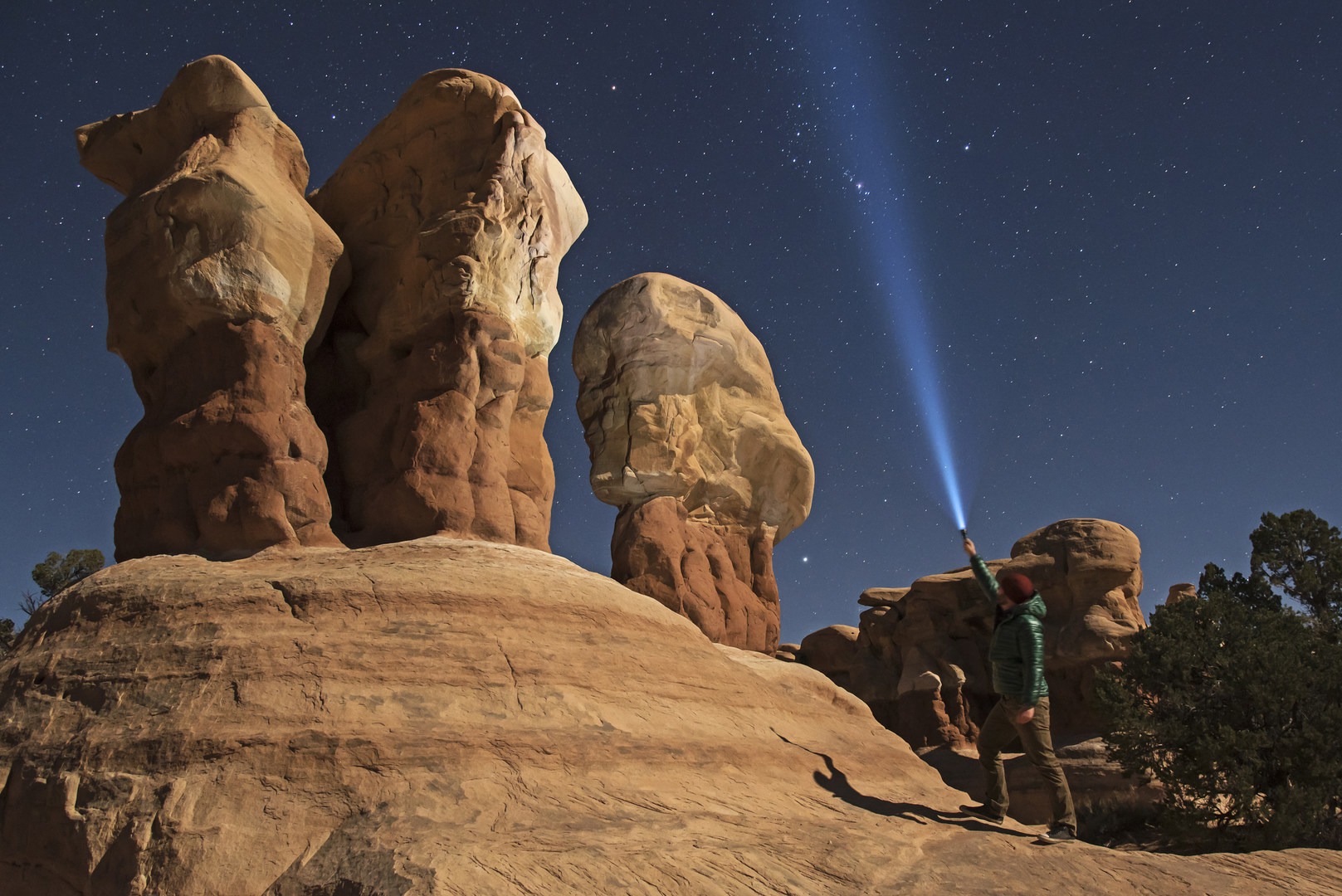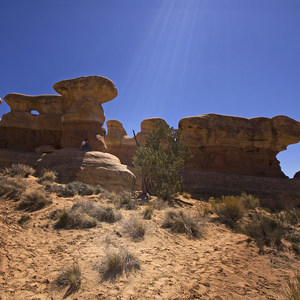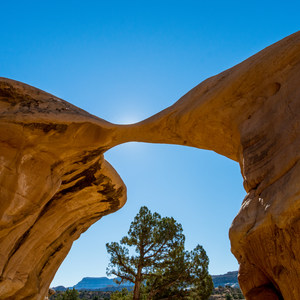You are here
Thursday, August 24, marked the day President Trump received the formal review and conclusions by the Department of Interior, run by Secretary Ryan Zinke, on how to modify the boundaries of national monuments designated since 1996. The public, on the other hand, received a summary letter entirely lacking in details beyond historical references and legal background information; further, there was no substantial explanation of how Zinke navigated the nearly 3 million public comments and local stakeholder meetings in his review. Full text of his one-and-a-half page summary letter is available on the Department of Interior website.
From the letter, it's clear the Department of Interior would like to establish a legal argument that will allow the Trump Administration to shrink monuments rather than eliminate them outright. In a separate interview, Secretary Zinke confirmed his recommendation that a "handful" of monuments should have smaller boundaries.
A few weeks later and specifics on Zinke's recommendations have now been leaked to the public. While we continue to wait on official statements from the involved parties, ten national monuments are on the chopping block for suggested shrinkage or protection/proclamation changes - the underlying reasoning for each recommendation stays true to Zinke's opinion that these lands should be open for development, natural resource use, and further exploitation.
The ten monuments Zinke has listed are as follows:
- Bears Ears National Monument, Utah
- Grand Staircase-Escalante National Monument, Utah
- Cascade Siskiyou National Monument, Oregon
- Gold Butte National Monument, Nevada
- Organ Mountains - Desert Peaks National Monument, New Mexico
- Rio Grande del Norte National Monument, New Mexico
- Katahdin Woods and Waters National Monument, Maine
- Northeast Canyons and Seamounts, Atlantic Ocean
- Pacific Remote Islands National Monument, Pacific Ocean
- Rose Atoll National Monument, Pacific Ocean
Designating public land as a national monument creates a broader set of protections that limit mining, mineral extraction, and other impactful uses. Several articles, including Secretary Zinke's own letter, confirm that the public comments were almost exclusively in favor of leaving the existing monument boundaries intact. In Secretary Zinke's letter, these public comments were summarily dismissed as "a well orchestrated national campaign organized by multiple organizations." Additionally, Zinke's Department of Interior, while concluding that designating an area as a national monument has a net positive economic benefit on an area, goes on to dismiss tourism-based economics as an "additional burden and responsibility on the Federal Government to provide additional resources and manpower to maintain these lands to better support increased visitation and recreational activities." Apparently the Trump administration's push for jobs and economic growth doesn't extend to the outdoor recreation economy.
Lost amidst Secretary Zinke's philosophizing on the relative merits or drawbacks of past monument designations, and their impacts on the people living nearby, is a public disclosure of the specific recommendations made by the Department of Interior to the White House. We wholeheartedly condemn this approach to public disclosure. It is consistent with this administration to put entertainment ahead of policy, and to use it to avoid transparency. Secretary Zinke's summary report fits squarely in this approach to controlling the news cycle. It is an affront to the millions of Americans who were energized to participate in what they thought was a public process. Without any indication from the White House or Department of Interior when to expect actual information on the "handful" of monuments that are recommended for changes, our elected officials and general public are excluded from providing additional input into how these potential changes will impact them.
Articles in the New York Times and Washington Post, citing unnamed sources, indicated that either three or four national monuments would be resized. These include Bears Ears National Monument, Grand Staircase-Escalante National Monument, and Cascade Siskiyou National Monument.
Responses from lawmakers and conservation groups point to the widespread frustrations over the lack of details provided by Secretary Zinke's report. As reported by New York Times, Representative Ruben Kihuen of Nevada, whose district includes the newly designated Gold Butte National Monument, lamented, "My constituents are asking what's going to happen to these lands, and I can't even go back and tell them. I'm frustrated, and my constituents are frustrated." In the same article, and in an enlightening contrast, Utah Representative Mike Noel declared the report a "victory" for Utah, and continued, "When you turn the management over to tree-huggers, the bird and bunny lovers and the rock lickers, you turn your heritage over." His comments, in negating the broad economic benefits outdoor recreation and tourism bring to the state, go far in explaining why Outdoor Retailer, the largest twice-annual conference for the outdoor industry, recently decided to move from Salt Lake City to Denver.
Conservation groups and outdoor industry partners are gearing up for a legal battle to protect national monuments. John Sterling, Executive Director of The Conservation Alliance, a critical conservation arm of the outdoor industry, and of which Outdoor Project is a member, indicated, "We are prepared to use our grant program to fund litigation challenging boundary changes made by executive action. We will support grassroots conservation groups that work to organize opposition to legislative efforts to shrink monuments. And we will continue to organize our member companies and their employees and customers to speak out forcefully in support of our public lands."
Sean Stevens, Executive Director of Oregon Wild, hammered home the same point. "Ultimately, we feel it is clear that it is illegal for the president to eliminate or reduce in size national monuments, so the very fact that Zinke has suggested to do just that is troubling," said Stevens. "It is also disturbing that the secretary so casually dismisses the vast majority (98% according to The Wilderness Society's hired statisticians) of comments that came in strongly in favor of keeping monument protections in place across the country. He uses strawman arguments to dismiss them, even after pretending that a desire for more public input was a driving force behind the review. Here in Oregon, he seems to be parroting timber industry rhetoric in saying that public lands are only good for logging and can't be protected by presidents or Congress. It makes it clear what this is all about - handing over lands to logging, mining, and other extractive industry no matter what the public wants."
Outdoor Project joined with stakeholders throughout the outdoor industry, recreation groups and conservation organizations, to promote maintaining these public lands. We were thrilled to see that over 3 million Americans took time to share their support of public lands, and we share their concerns that rolling back protections of these lands would adversely impact the history, wildlife, and people that rely on them for their livelihood. We will continue to work with our conservation partners, including The Conservation Alliance and Oregon Wild, to keep you informed on how you can share your support of public lands and demand transparency of the Trump Administration.
Cover photo by Outdoor Project Contributor Kyle Jenkins, from Devils Garden in Grand Staircase-Escalante National Monument.







Comments
Sign In and share them.